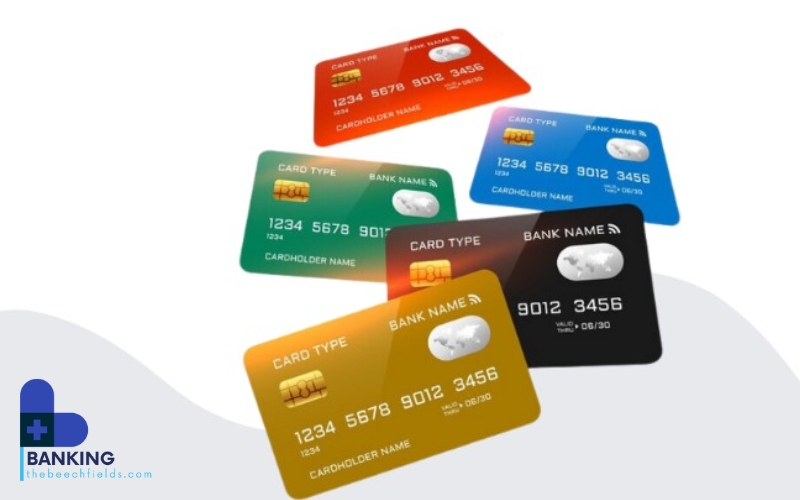Bank cards have now become a popular payment tool in our daily lives. They not only help users easily make financial transactions but also bring many outstanding benefits such as safety, convenience and speed. Depending on the purpose of use and personal needs, there are many different types of bank cards that customers can choose from. This article will describe in detail the popular types of bank cards today, helping you better understand each type and how they work.
1. DEBIT CARD
Debit cards are the most popular type of card and are widely used in daily transactions. The outstanding feature of debit cards is that users can only spend within the amount of money in their account. This helps users control spending and avoid falling into debt.

When using a debit card, users can make transactions such as withdrawing money at ATMs, paying for purchases, transferring money, and paying bills online. In addition, debit cards also help users save time when making transactions, while limiting the need to carry cash when going out. Some debit cards also support contactless payment features, making payments faster and more convenient.
2. CREDIT CARD
Unlike debit cards, credit cards allow users to spend first and pay later, with a certain credit limit. Credit cards offer many advantages such as flexible payment capabilities and accumulating reward points from transactions. However, credit cards also come with some risks if not used carefully, because if you do not pay on time, you will have to pay high interest rates.
Credit cards are useful in situations that require large expenditures, such as online shopping or paying for international services. In addition, many banks also offer special incentive programs for credit card holders such as discounts, cashback or points to redeem for gifts. Credit cards are also widely used in hotel reservations, airline tickets or car rentals, thanks to the convenience and flexibility they bring.
3. ATM CARD
ATM card is a simple but very useful type of bank card, mainly used to withdraw money at ATMs. ATM cards can be directly linked to the user’s payment account, helping to perform basic transactions such as withdrawing money, transferring money, checking balances and printing account statements. ATM cards usually do not have online payment or contactless payment features, but are still an essential payment tool in everyday life.
In addition to being used at ATMs, ATM cards can also be used to make payments at payment card acceptance points, although their scope of use is not as wide as that of debit or credit cards. ATM cards can also be used to receive money transfers from other individuals or organizations quickly and conveniently.
4. PREPAID CARD (PREVENTIONAL CARD)
Prepaid cards, also known as prepaid cards, are cards that require users to load money onto the card before using it. With prepaid cards, users can only spend within the amount of money loaded onto the card, helping to limit overspending. This card does not require users to have a bank account, and does not have a credit loan feature like a credit card.
Prepaid cards are often used in cases such as online shopping, international payments, or as gifts for relatives. Prepaid cards are also popular for their simplicity and ease of use, especially for those who do not want to open a bank account or use a credit card. Some prepaid cards can also be used to pay at domestic or international card acceptance points.
5. GIFT CARD
A gift card is a prepaid card designed specifically for gift giving. It has a cash value loaded onto it and the recipient can use it to shop in stores or online. Gift cards are a popular choice for holidays, birthdays, or special events.
A gift card does not require the user to have a bank account or credit card. It is also convenient because it can be used immediately without having to worry about overspending. However, some gift cards may lose value after a certain period of time, so the recipient needs to use the card within the specified time.
6. CONSUMER LOAN CARD
A consumer loan card is a type of bank card that helps users borrow money from the bank to spend on personal consumption purposes. With a consumer credit card, users can use a certain credit limit to spend and pay gradually over certain periods. Consumer credit cards often come with lower interest rates than credit cards and are a flexible financial solution for those who need to borrow money in a short period of time.
Consumer credit cards are often issued to people with good credit and the ability to pay on time. With this card, users can borrow money to shop, pay tuition, pay for medical treatment or pay for other expenses without having to worry about paying off the debt immediately.
7. SHOPPING CARD
Shopping cards are cards issued by retail stores or large shopping centers, making it easy for users to pay when shopping at these points of sale. Shopping cards can bring many special incentives to users such as discounts, accumulating reward points or receiving gifts when making purchases. This is a useful tool for those who regularly shop at stores or shopping malls that cooperate with card-issuing banks.
CONCLUSION
Bank cards not only help users make financial transactions easily but also bring many benefits such as fast payment, high security and effective financial management. Depending on the needs of use and spending purposes, each type of bank card has its own advantages. Understanding the types of cards and their functions will help you choose the card that best suits your personal needs, thereby making the most of banking services and improving the quality of your financial life.
